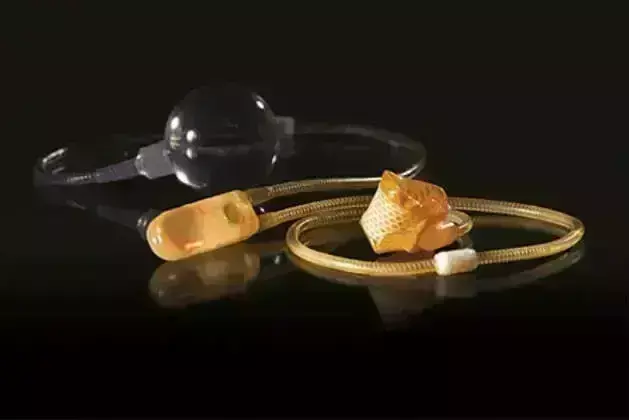- Home
- Medical news & Guidelines
- Anesthesiology
- Cardiology and CTVS
- Critical Care
- Dentistry
- Dermatology
- Diabetes and Endocrinology
- ENT
- Gastroenterology
- Medicine
- Nephrology
- Neurology
- Obstretics-Gynaecology
- Oncology
- Ophthalmology
- Orthopaedics
- Pediatrics-Neonatology
- Psychiatry
- Pulmonology
- Radiology
- Surgery
- Urology
- Laboratory Medicine
- Diet
- Nursing
- Paramedical
- Physiotherapy
- Health news
- Fact Check
- Bone Health Fact Check
- Brain Health Fact Check
- Cancer Related Fact Check
- Child Care Fact Check
- Dental and oral health fact check
- Diabetes and metabolic health fact check
- Diet and Nutrition Fact Check
- Eye and ENT Care Fact Check
- Fitness fact check
- Gut health fact check
- Heart health fact check
- Kidney health fact check
- Medical education fact check
- Men's health fact check
- Respiratory fact check
- Skin and hair care fact check
- Vaccine and Immunization fact check
- Women's health fact check
- AYUSH
- State News
- Andaman and Nicobar Islands
- Andhra Pradesh
- Arunachal Pradesh
- Assam
- Bihar
- Chandigarh
- Chattisgarh
- Dadra and Nagar Haveli
- Daman and Diu
- Delhi
- Goa
- Gujarat
- Haryana
- Himachal Pradesh
- Jammu & Kashmir
- Jharkhand
- Karnataka
- Kerala
- Ladakh
- Lakshadweep
- Madhya Pradesh
- Maharashtra
- Manipur
- Meghalaya
- Mizoram
- Nagaland
- Odisha
- Puducherry
- Punjab
- Rajasthan
- Sikkim
- Tamil Nadu
- Telangana
- Tripura
- Uttar Pradesh
- Uttrakhand
- West Bengal
- Medical Education
- Industry
Contrast Use in Artificial Urinary Sphincter Does Not Affect Device Survival

Prostate cancer survivors have incontinence rates of 4% to 87% for one year after prostatectomy. The artificial urinary sphincter (AUS) remains the gold standard for post-prostatectomy incontinence. In a study, researchers have reported that the use of contrast in the AUS does not appear to change rates of device malfunction, fluid loss, or need for reoperation. The research has been published in the journal Neurology and Urodynamics on April 03, 2021.
AUS can be filled with normal saline (NS) or isotonic contrast solution. However, surgeons have voiced concerns about the impact on device malfunction and longevity, but no studies address this issue. Therefore, researchers of the Duke University Medical Center, USA, conducted a study to identify differences in outcomes between NS and contrast-filled AUS.
For this analysis, the researchers included a total of 39,363 patients in the industry who maintained the AUS database (Boston Scientific) from 2001 to 2016. They divided the patients into two groups: AUS filled with NS or contrast. They compared the patient demographics and device characteristics. The device survival was determined as time to the need for reoperation. They also compared device survival between AUS filled with NS versus contrast using a Kaplan–Meier curve adjusted for age, cuff size, and pressure regulating balloon (PRB) size.
Key findings of the study were:
- Among 39,363 patients, 34,674 (88.1%) devices were filled with NS.
- The researchers noted that the overall reoperation rate was 24.5%, with no difference between groups with a mean time to the operation of 3 years.
- After adjustment for age, cuff size, and PRB size using Kaplan–Meier analysis, they found a similar time to reoperation between the two groups.
The authors concluded, "The use of contrast in the AUS does not appear to change rates of the device malfunction, fluid loss, or need for reoperation. Since filling the device with contrast does not appear inferior to saline in terms of longevity, we feel this should be considered a safe tool for the implanting surgeon."
For further information:
https://onlinelibrary.wiley.com/doi/10.1002/nau.24668
Dr Kartikeya Kohli is an Internal Medicine Consultant at Sitaram Bhartia Hospital in Delhi with super speciality training in Nephrology. He has worked with various eminent hospitals like Indraprastha Apollo Hospital, Sir Gangaram Hospital. He holds an MBBS from Kasturba Medical College Manipal, DNB Internal Medicine, Post Graduate Diploma in Clinical Research and Business Development, Fellow DNB Nephrology, MRCP and ECFMG Certification. He has been closely associated with India Medical Association South Delhi Branch and Delhi Medical Association and has been organising continuing medical education programs on their behalf from time to time. Further he has been contributing medical articles for their newsletters as well. He is also associated with electronic media and TV for conduction and presentation of health programs. He has been associated with Medical Dialogues for last 3 years and contributing articles on regular basis.
Dr Kamal Kant Kohli-MBBS, DTCD- a chest specialist with more than 30 years of practice and a flair for writing clinical articles, Dr Kamal Kant Kohli joined Medical Dialogues as a Chief Editor of Medical News. Besides writing articles, as an editor, he proofreads and verifies all the medical content published on Medical Dialogues including those coming from journals, studies,medical conferences,guidelines etc. Email: drkohli@medicaldialogues.in. Contact no. 011-43720751


